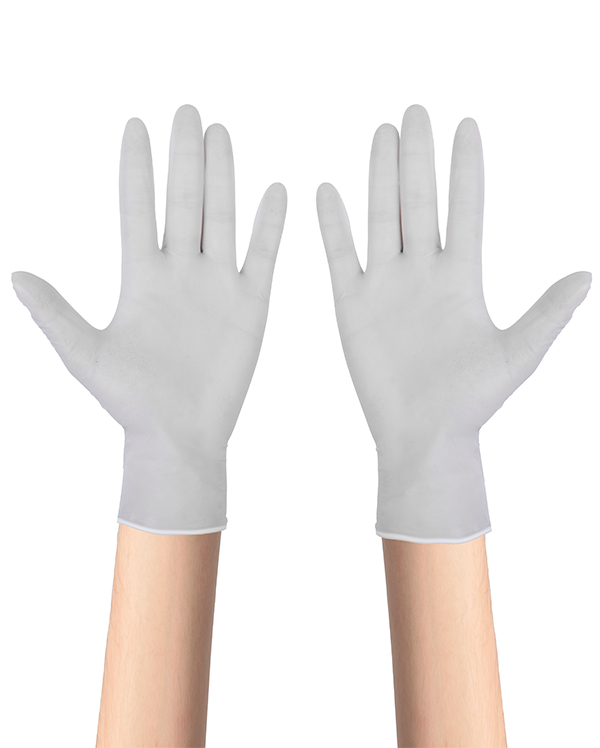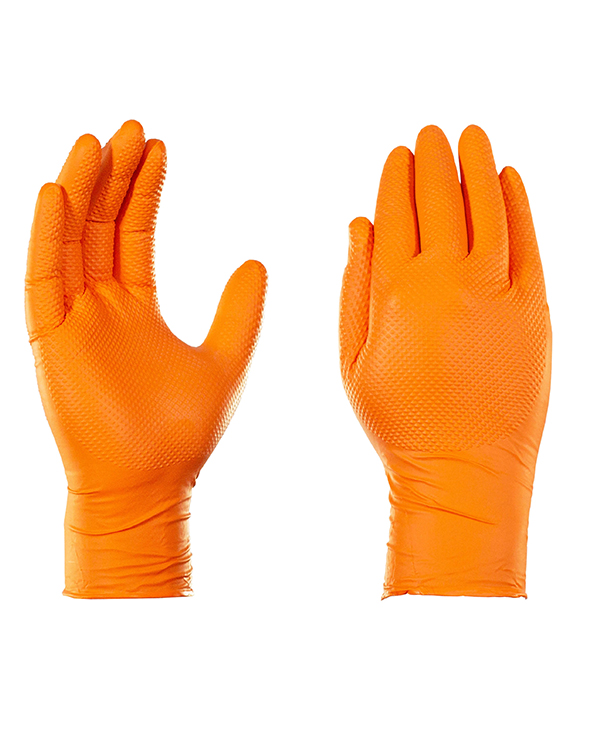Although Purified Nitrile Protective Gloves and ordinary nitrile gloves also use nitrile rubber as the main material, their production process is more sophisticated and is mainly aimed at the needs of high-cleanliness environments. In order to meet the usage standards of high-demand industries such as clean rooms, electronic manufacturing and medical devices, purification-grade gloves reflect significant technical differences in multiple production links.
1. Purification and screening of raw materials
The production of purification-grade nitrile gloves is strictly controlled from the raw material stage. Compared with ordinary nitrile gloves, purification-grade products use high-purity nitrile rubber, and the addition of potential contaminants such as fillers, plasticizers and colorants during the compounding process is reduced or completely avoided. In addition, the content of trace metal ions and organic impurities in raw materials is strictly monitored to ensure the purity of the materials.
2. Cleanliness requirements for production environment
Ordinary nitrile gloves are usually produced in ordinary industrial workshops, while purification-grade gloves need to be produced in a clean room. The air quality in these clean workshops is strictly filtered to ISO 14644 or similar standards to prevent external particles and microorganisms from contaminating products. Production equipment has also undergone special treatment to ensure that no secondary pollution occurs.
3. Deionized water cleaning process
Purification-grade nitrile gloves are added with a deionized water (DI Water) cleaning step after production to remove possible residual particles and dissolved impurities on the surface. In contrast, ordinary nitrile gloves may be simply washed or not washed. Through multiple rinses with high-purity water, purification-grade gloves can significantly reduce surface ion content and particle emission levels, meeting the requirements of high-cleanliness environments.
4. Refinement of post-processing technology
The post-processing of purification-grade gloves is more complex, including vacuum drying and dust-free packaging. Vacuum drying can further reduce residual chemicals in the gloves, while dust-free packaging uses antistatic or vacuum sealing materials to keep the gloves in a clean, stable environment. Ordinary nitrile gloves are usually packaged in ordinary plastic bags and have relatively low requirements for environmental cleanliness.
5. Product testing and quality certification
Purification-grade nitrile gloves need to pass more stringent quality tests, such as particulate emission testing, ionic contamination testing and chemical resistance testing. These tests not only verify the product's cleaning performance, but also ensure its reliability in high-end use environments. The testing standards for ordinary nitrile gloves focus more on basic physical properties such as tear resistance and elasticity.
Technology development driven by industry needs
With the rapid development of high-precision industries such as electronic manufacturing and biopharmaceuticals, the demand for purification-grade nitrile gloves is increasing. Manufacturers are also constantly improving their processes, such as using more advanced filtration systems and introducing fully automated production lines, to improve the cleanliness and production efficiency of gloves.

 English
English  中文简体
中文简体















